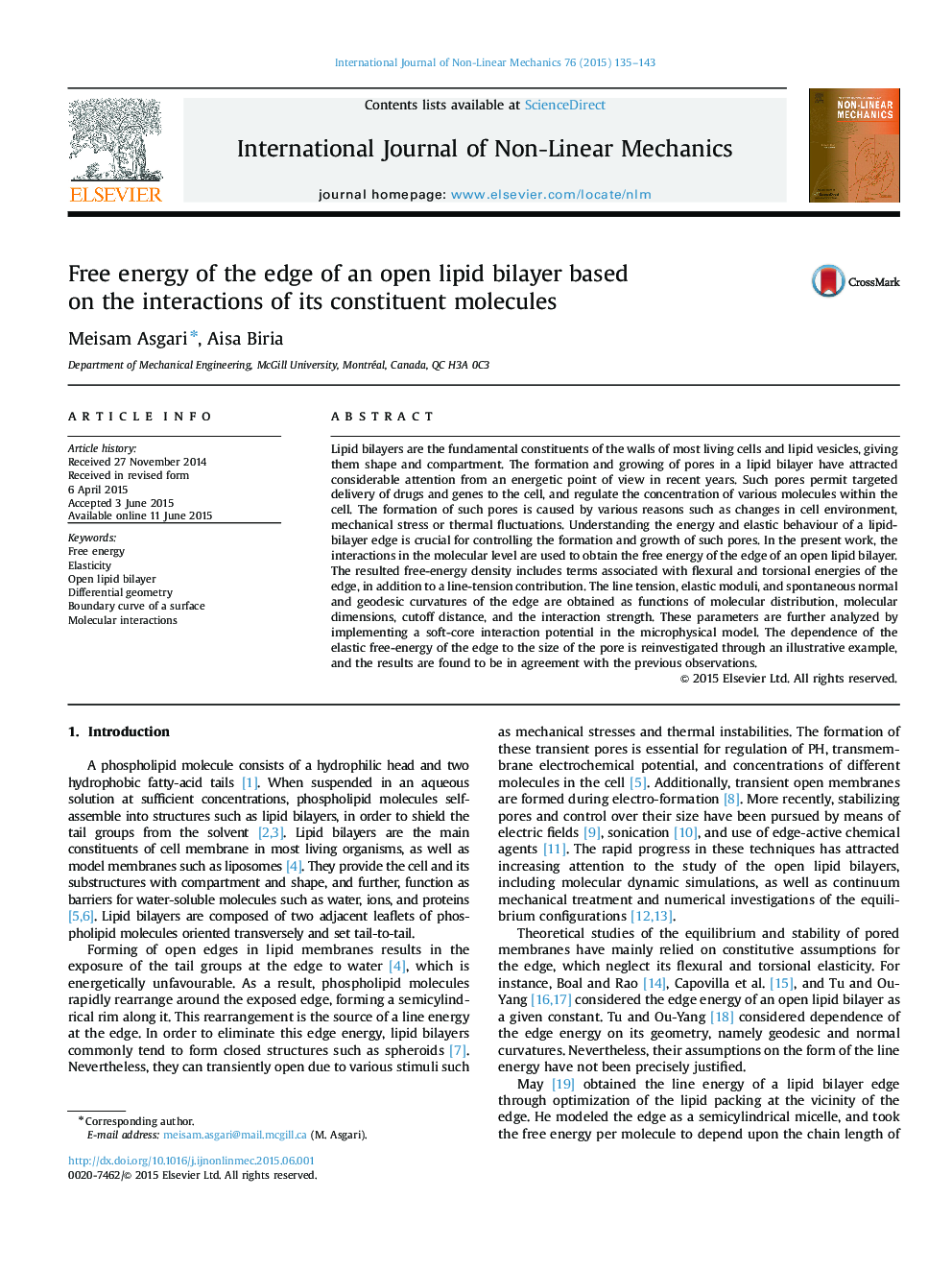| Article ID | Journal | Published Year | Pages | File Type |
|---|---|---|---|---|
| 784841 | International Journal of Non-Linear Mechanics | 2015 | 9 Pages |
•A model for the free energy of the edge of an open lipid bilayer is derived.•The derivation is based on the interactions of the molecules comprising the edge.•The derived model can be employed to study pore growth in open lipid bilayers.•The model captures bending and torsional energies of the edge, in addition to the line tension.•The molecular origins of spontaneous curvatures and elastic moduli are investigated.
Lipid bilayers are the fundamental constituents of the walls of most living cells and lipid vesicles, giving them shape and compartment. The formation and growing of pores in a lipid bilayer have attracted considerable attention from an energetic point of view in recent years. Such pores permit targeted delivery of drugs and genes to the cell, and regulate the concentration of various molecules within the cell. The formation of such pores is caused by various reasons such as changes in cell environment, mechanical stress or thermal fluctuations. Understanding the energy and elastic behaviour of a lipid-bilayer edge is crucial for controlling the formation and growth of such pores. In the present work, the interactions in the molecular level are used to obtain the free energy of the edge of an open lipid bilayer. The resulted free-energy density includes terms associated with flexural and torsional energies of the edge, in addition to a line-tension contribution. The line tension, elastic moduli, and spontaneous normal and geodesic curvatures of the edge are obtained as functions of molecular distribution, molecular dimensions, cutoff distance, and the interaction strength. These parameters are further analyzed by implementing a soft-core interaction potential in the microphysical model. The dependence of the elastic free-energy of the edge to the size of the pore is reinvestigated through an illustrative example, and the results are found to be in agreement with the previous observations.
